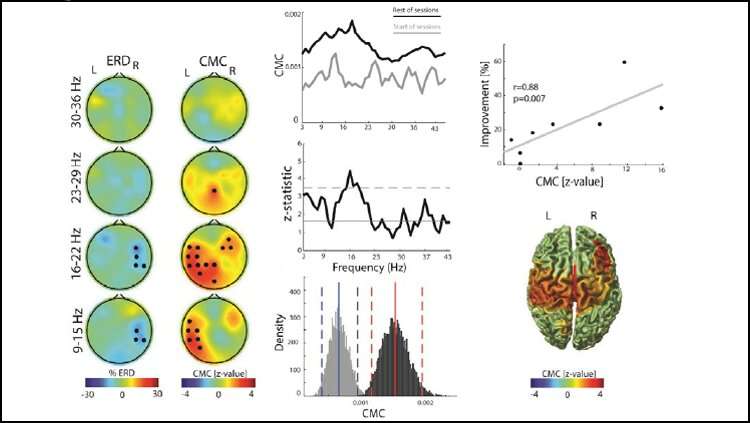Modulation of motor imagery-related event-related desynchronization (ERD) and cortico-muscular coherence (CMC). Credit: Khademi et al., JNeurosci 2022
Brain-robot interfaces—apparatuses where brain activity controls the movements of a robotic device that supports a hand or limb—show promise in rehabilitating paralyzed stroke patients. Yet the exact way the therapy impacts the brain is unknown, making it difficult to test and refine the technology. New research published in JNeurosci indicates the interfaces might work by helping the brain reroute motor commands around damaged areas.
Khademi et al. measured the brain and muscle activity of healthy participants and stroke patients using EEG and EMG while they controlled a brain-robot interface. The participants thought about moving their hand and received proprioceptive feedback: the robot apparatus moved their hand. During the intervention, synchronized electrical activity between hand muscles and parts of the brain increased, a sign of enhanced communication. The healthy participants completed a motor task before and after the feedback intervention; the increased synchronization was linked to improved motor performance.
In the stroke patients with hand paralysis, the feedback intervention resulted in the same increase in synchronized activity, but in different areas than in the healthy participants. The standard motor pathways had been damaged during the stroke, and other brain areas and pathways took over the communication role.
More information: Rewiring cortico-muscular control in the healthy and post-stroke human brain with proprioceptive beta-band neurofeedback, JNeurosci (2022). DOI: 10.1523/JNEUROSCI.1530-20.2022
Journal information: Journal of Neuroscience
Provided by Society for Neuroscience























